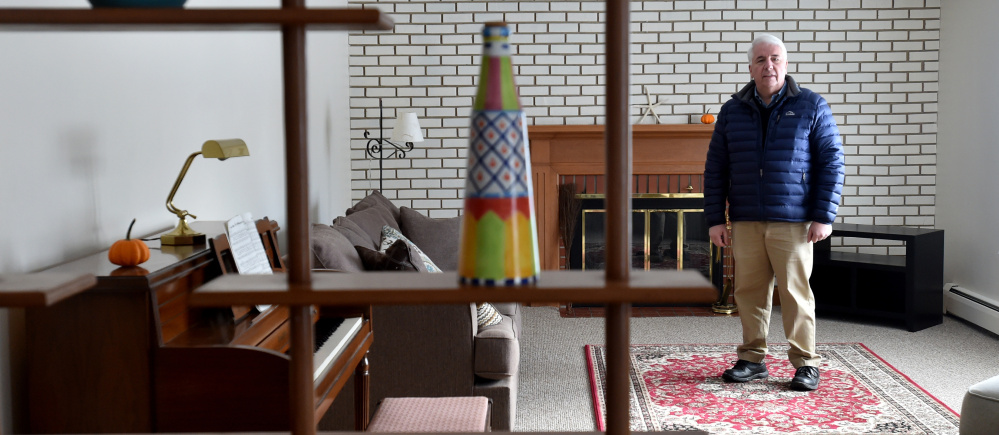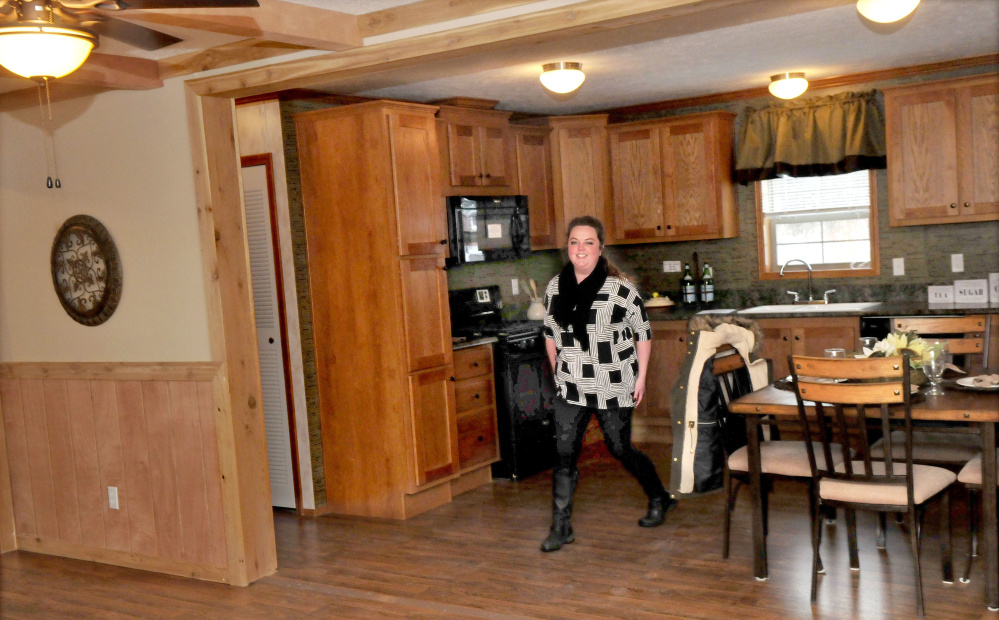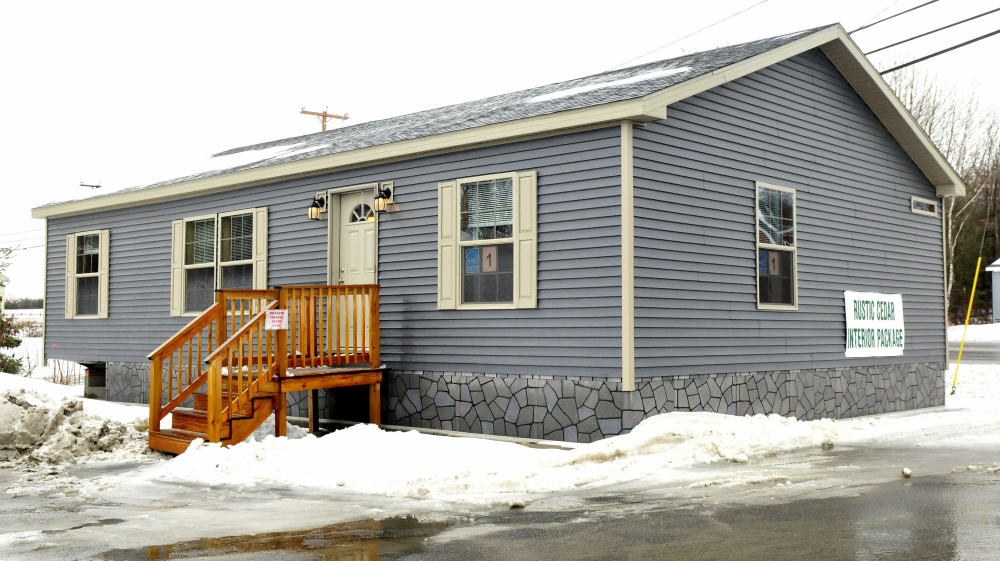Waterville and nearby Winslow are poised for population growth and tax base expansion as a number of promising economic development initiatives start to ramp up. But while the neighboring communities on opposite sides of the Kennebec River see growth potential, area leaders are warning that the Waterville area’s shortage of housing and high prices for existing housing could pose a barrier.
Spurred by a pair of $10 million investment grants from Colby College and the Harold Alfond Foundation, a Waterville revitalization project could change the entire face of downtown. Colby has bought five vacant, deteriorating buildings and plans to redevelop them; the college is also planning a residential complex for students on part of The Concourse; Bill Mitchell, the owner of GHM Insurance Agency, has bought two buildings on Common Street; Colby bought the former Hains building on Main Street, which will house technology firm Collaborative Consulting; and Colby also tore down the former Levine’s clothing store to build a boutique hotel and restaurant by 2018.
While Waterville City Manager Michael Roy said it’s hard to speculate what effect the Colby projects will have over the next few years, he hopes they will provide a boost.
“I do think that Waterville’s population does need to grow,” Roy said.
Waterville’s population is nearly 16,000, with about 6,350 households; and Winslow’s is about 7,600, with about 3,230 households, according to the data from the U.S. Census and Maine State Housing Authority. Compared with Census data from 2000, Winslow’s population has slipped by about 150, while Waterville’s has edged up by about 400.
If the revitalization draws in more businesses, more workers and a larger population base, housing will be needed. But Waterville might be running out of options.
“We’ve seen the inventory in our multiple listing services drop off,” said Don Plourde, owner of Coldwell Banker Plourde Real Estate. Plourde said the number of houses for sale from Realtors in the Waterville area is down 30 percent from this time last year, thanks to a strong market.
“Now we’re getting to a point where we really need some new construction,” he said, adding that it’s been about eight years since the area has seen much building of new homes. “I think we’re going to be running out of inventory.”
not just the poor
Mechele Dickerson, a professor at Texas Law at the University of Texas at Austin, said the issue of affordable housing no longer concerns just the poor. Dickerson is an expert on consumer debt and the author of “Homeownership and America’s Financial Underclass: Flawed Premises, Broken Promises, New Prescriptions.”
“One of the problems when we use the term ‘affordable housing’ now is everyone thinks of ‘those people,’ and instinctively go to the poor,” Dickerson said in a phone interview Friday. “Affordable housing is no longer just a problem for the poor. It’s not a Section 8 problem.”
She said she’s seen this problem arise in cities such as Austin, where university professors can afford to live in the high-priced city, but not university staff.
“Whether it’s a big city or a small city, affordable housing is an issue across the country,” she said. “One of the issues when you get into smaller towns … is the labor, the wage issue.”
From 1980 to 2010, the number of housing units in Waterville increased by only 417, or 6.3 percent, according to data on housing in the town’s 2014 comprehensive plan. In Kennebec County, the number of housing units increased by 34 percent in the same period, and in the state by 44 percent.
APARTMENT HUNT
While new residential units may be necessary as Waterville welcomes new business, the city also has to grapple with the cost of its current housing stock.
According to data from the city’s comprehensive plan, 42.7 percent of households weren’t able to afford homes at the median price – $99,950 – in 2015.
However, more than 50 percent of housing units in 2010 were renter-occupied. Statewide, 26.9 percent of units were renter-occupied. The plan states that it doesn’t expect that ratio to change.
And in a city with more renters than homeowners, renting isn’t cheap.
The average two-bedroom rent with utilities in Waterville was $777 in 2015, according to data from the Maine State Housing Authority. Rent is considered affordable if the renter pays no more than 30 percent of their income on housing.
But the median renter’s household income in Waterville is $26,136 – 30 percent would be $653 per month. According to the housing authority, renters would need to make $31,092 to afford the median rent in Waterville.
There is also a great need for lower-income housing, as evidenced by the Waterville Housing Authority’s waiting list dating to around 2011. There are 1,472 people on the list, according to Diane Townsend, executive director of the housing authority.
Townsend said the majority of the people her agency serves make 30 percent of the median family income or less, which is $59,200 in Kennebec County, according to the U.S. Department of Housing and Urban Development.
working class crunch
“From that perspective, there is typically a never-ending supply of people who need assistance, of people who can’t find apartments they can afford,” Townsend said.
The housing authority is authorized to hand out 394 Section 8 vouchers for housing assistance, but on average only has 370 per year because “the funding isn’t there,” she said.
Townsend also mentioned the “mid-poor,” or people who earn 50 to 60 percent of the median income.
The mid-poor make too much to qualify for most subsidy programs, she said. The housing authority works with a separate nonprofit development company to provide housing for households in that 50 percent-to-60 percent range.
Middle-income workers might not have gotten a raise in the past 15 years, yet housing prices keep increasing, pricing them out of the area, according to Dickerson, the Texas Law professor.
Anytime a city gets an influx of high-income workers, the cost of housing gets run up, Dickerson said, which means revitalization often can lead to gentrification.
“The good news about urban revitalization … it’s a boon for economic development,” she said. “The bad thing is, it’s a boon for high-income workers more so than the people who are currently there.”
There are some steps towns and cities can take to avoid pricing out current residents while trying to attract new ones, Dickerson said.
Cities can ask developers to set aside a percentage of housing units for affordable housing, she said, or ask incoming businesses to agree to subsidize some affordable housing.
They can also work with new businesses to provide training for current residents so they can make the wages needed to afford housing as prices rise.
Madeline St. Amour can be contacted at 861-9239 or at:
mstamour@centralmaine.com
Copy the Story LinkSend questions/comments to the editors.






Success. Please wait for the page to reload. If the page does not reload within 5 seconds, please refresh the page.
Enter your email and password to access comments.
Hi, to comment on stories you must . This profile is in addition to your subscription and website login.
Already have a commenting profile? .
Invalid username/password.
Please check your email to confirm and complete your registration.
Only subscribers are eligible to post comments. Please subscribe or login first for digital access. Here’s why.
Use the form below to reset your password. When you've submitted your account email, we will send an email with a reset code.